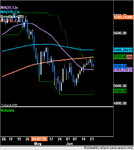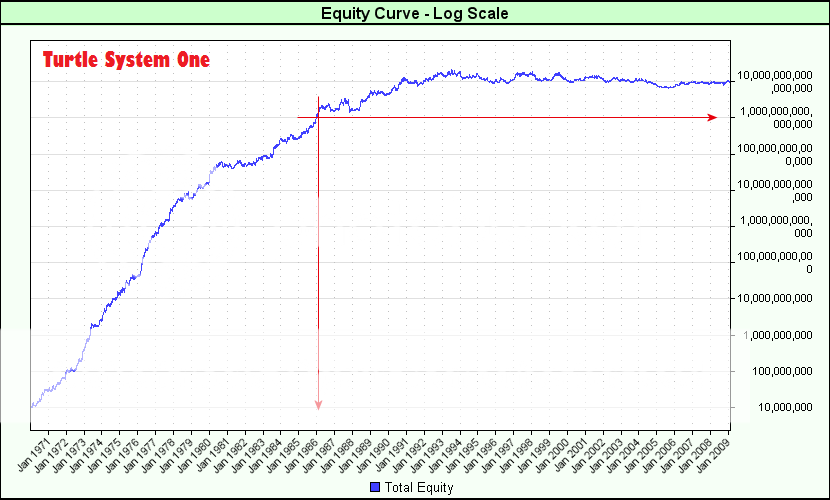hi, reading the turtles book.
for example: 20 days breakout (4 weeks)
can we look at weekly candle increment chart? or are daily bars the way to go?
i guess daily right? as during the 4th week candle...you cant look into a full 4 weeks, i hope you understand what im saying.....we should look at daily candles right?
(sorry im also thinking aloud here)
and if you are looking at daily candles, say you are watching todays candle, are you comparing the previous 20 candles? or previous 19 candles?
if you are comparing the previous 20 candles, so then thats 21 candles in total you are concerned with....?
And the Exit strategy: 10 day low for long position.
does this mean 10 consecutive days where the price closed lower than the day before?
or does it mean you just look at the 10 previous days and find the lowest price of the 10 days, and if the price falls below that lowest low, then you exit....?
10 day low: so you look at 10 candles in total including todays, or 11?
11 meaning todays, and the previous 10 candles.
Thanks to any help given.
for example: 20 days breakout (4 weeks)
can we look at weekly candle increment chart? or are daily bars the way to go?
i guess daily right? as during the 4th week candle...you cant look into a full 4 weeks, i hope you understand what im saying.....we should look at daily candles right?
(sorry im also thinking aloud here)
and if you are looking at daily candles, say you are watching todays candle, are you comparing the previous 20 candles? or previous 19 candles?
if you are comparing the previous 20 candles, so then thats 21 candles in total you are concerned with....?
And the Exit strategy: 10 day low for long position.
does this mean 10 consecutive days where the price closed lower than the day before?
or does it mean you just look at the 10 previous days and find the lowest price of the 10 days, and if the price falls below that lowest low, then you exit....?
10 day low: so you look at 10 candles in total including todays, or 11?
11 meaning todays, and the previous 10 candles.
Thanks to any help given.


